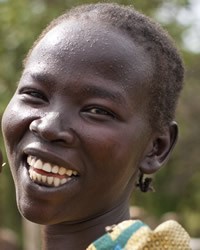The Moru people speak Moru, a Central Sudanic language with several dialects including Miza, Ägyi, Moroändri, Kediro, and 'Bari'ba. Historically, they have lived in Western Equatoria, particularly in the counties of Mundri East and West. Their history includes displacement due to Azande attacks, slave raids, and colonial administration under the Ottoman-Egyptian province of Equatoria, later part of the Lado Enclave under Belgian Congo rule.Christian missionary Dr. Kenneth Grant Fraser played a pivotal role in the early 20th century, establishing hospitals, schools, and churches in Moru territory. His work led to significant improvements in healthcare and education and helped reform harmful traditional practices.Almost all Morus are from South Sudan, but a small number are in the United States.
As a general rule, the United States admits people from Africa with a good education and marketable skills, but not those who work as common farmers. Those from South Sudan are often refugees.The Moru join others from Africa, usually in an urban environment. Social life is rich with music, dance, and seasonal festivals. Drumming and dancing are important elements. They use instruments such as the gara rattle, Kudi, and Lekyembe harps in both religious and social contexts.
About three-fourths identify as Christian, but traditional religious practices are sometimes blended with Christianity.
Despite historical improvements, modern healthcare infrastructure remains limited. Continued support for schools and literacy programs is essential, especially in rural areas. Most Moru rely on subsistence farming and lack access to markets, agricultural training, and financial services. South Sudan's ongoing conflicts have disrupted life, causing displacement and trauma among the Moru and neighboring groups.
Pray for spiritual revival among the Moru, that nominal Christianity would be replaced by vibrant, Christ-centered faith.Ask God to raise up local leaders and evangelists who can disciple others who will disciple others in unreached areas.Intercede for healing and restoration for those affected by war, displacement, and trauma.Lift up the youth, that they would find hope and purpose in Christ amid economic and social challenges.Pray for protection and provision for families living in remote areas with limited access to food, water, and medical care.
Scripture Prayers for the Moru in United States.
AI generated by CopilotWikipedia – Moru People
| Profile Source: Joshua Project |










